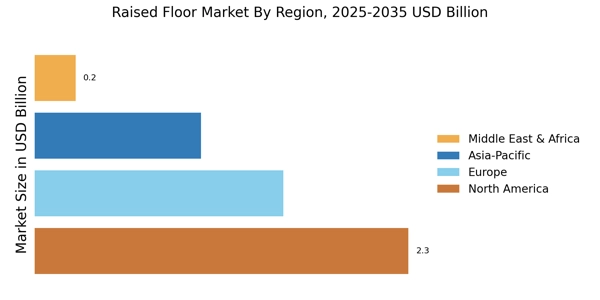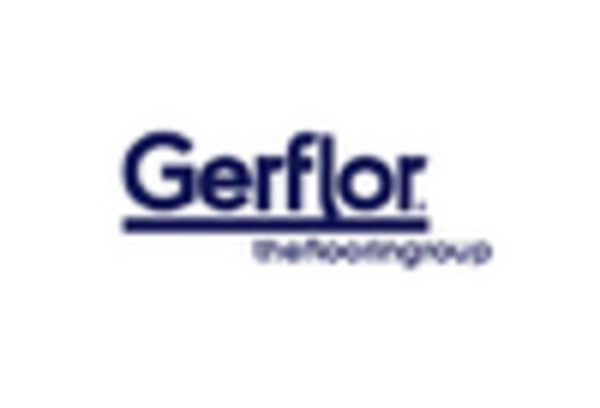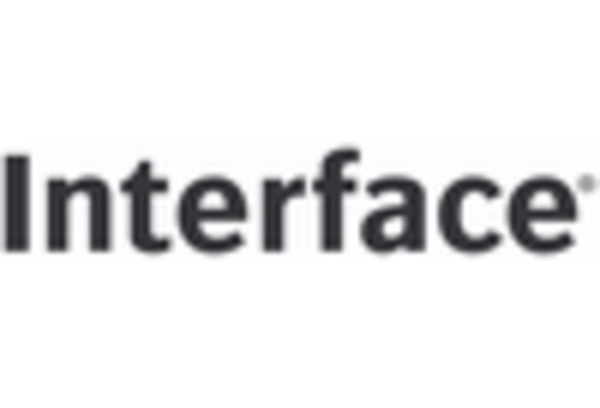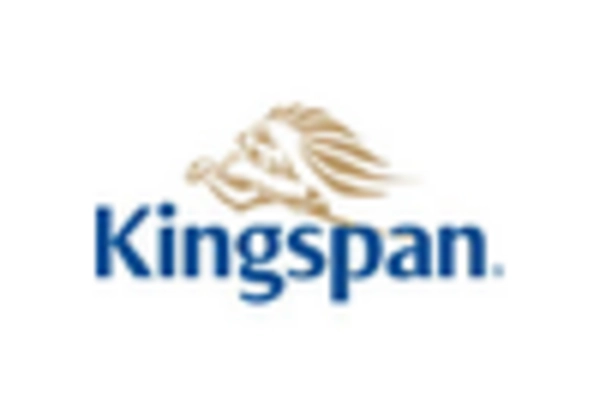Growth in Commercial Real Estate
The expansion of the commercial real estate sector significantly influences the Raised Floor Market. As urbanization continues to rise, there is a notable increase in the construction of office buildings, retail spaces, and mixed-use developments. These structures often require advanced flooring solutions to accommodate modern technological needs. The commercial real estate market has shown resilience, with a steady increase in new projects and renovations. This trend indicates a growing preference for raised flooring systems, which offer flexibility and adaptability in design. The integration of raised floors in new constructions is likely to enhance the overall functionality of commercial spaces, thereby driving demand in the Raised Floor Market.
Increased Demand for Data Centers
The surge in demand for data centers is a pivotal driver for the Raised Floor Market. As businesses increasingly rely on digital infrastructure, the need for efficient cooling and cable management solutions becomes paramount. Raised flooring systems facilitate optimal airflow and provide easy access to electrical and data cabling, which is essential for maintaining operational efficiency. According to industry reports, the data center market is projected to grow at a compound annual growth rate of over 10% in the coming years. This growth directly correlates with the rising adoption of cloud computing and big data analytics, thereby propelling the Raised Floor Market forward.
Sustainability and Energy Efficiency Trends
The growing emphasis on sustainability and energy efficiency is a significant driver for the Raised Floor Market. As organizations strive to reduce their carbon footprint, the demand for eco-friendly building materials and energy-efficient designs is on the rise. Raised flooring systems can contribute to energy savings by improving HVAC efficiency and enabling better airflow management. The construction industry is increasingly adopting green building practices, with many projects seeking LEED certification. This shift towards sustainable construction methods is likely to bolster the Raised Floor Market, as more developers recognize the benefits of incorporating raised flooring into their designs.
Technological Advancements in Flooring Solutions
Technological innovations play a crucial role in shaping the Raised Floor Market. The introduction of advanced materials and design techniques has led to the development of more efficient and durable raised flooring systems. Innovations such as modular flooring and smart flooring solutions that integrate sensors for monitoring environmental conditions are gaining traction. These advancements not only improve the performance of raised floors but also enhance their aesthetic appeal. The market for smart buildings is expanding, with a projected growth rate of around 12% annually. This trend suggests that the Raised Floor Market will continue to evolve, driven by the demand for high-tech solutions in modern infrastructure.
Rising Awareness of Workplace Comfort and Productivity
The heightened focus on workplace comfort and productivity is influencing the Raised Floor Market. Organizations are increasingly recognizing the impact of physical workspace design on employee performance and well-being. Raised flooring systems allow for better cable management and improved air circulation, contributing to a more comfortable working environment. Studies indicate that well-designed workspaces can enhance employee satisfaction and productivity by up to 20%. As companies invest in creating conducive work environments, the demand for raised flooring solutions that support these objectives is likely to increase, further driving growth in the Raised Floor Market.


















Leave a Comment